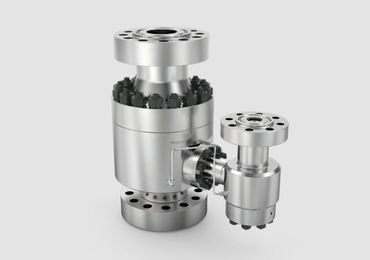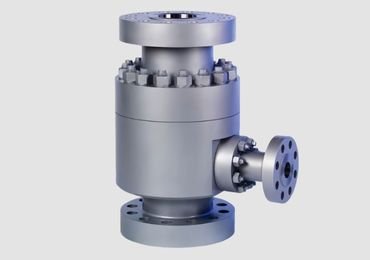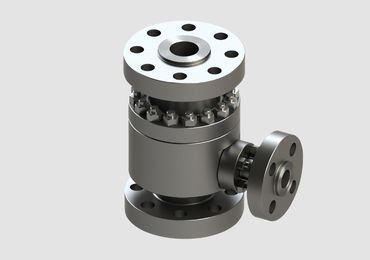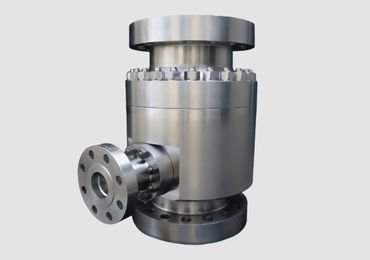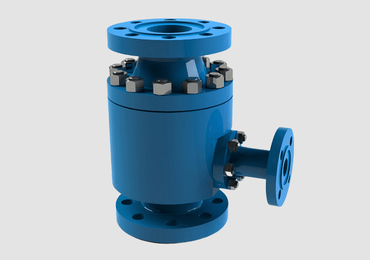ARV: Automatic Recirculation Valve for Critical Flow Control
Centrifugal pumps occupy a very important place in every industry; thus, their safety is a very important issue. Failure to protect pumps can lead to severe damages occasioned by low flow conditions, cavitation, or overheating of the pump. This causes costly downtimes and repairs, which are unfavorable for most businesses and other organizations.
The solution? Automatic Recirculation Valves (ARC Valves)—a necessary device used to maintain the specified minimum circulation rate for centrifugal pumps and provide this rate automatically. At RUFSUPPLY, our ARC valves are both protective and performance improving for your pump systems.
As a leading and credible ARC valves manufacturer and supplier from China, RUFSUPPLY has the excellent quality, reasonable price, and stable performance to meet the demand of the global buyers.
Automatic Recirculation Valve Specification
| Parameter | Specification | Unit |
|---|---|---|
| Valve Type | Automatic Recirculation Valve (ARV) | – |
| Material | Stainless Steel (SS316/SS304), Duplex Steel, Alloy Steel | – |
| Pressure Rating | Class 150 to Class 2500, 6000 to 10000 PSI | PSI/Class |
| Temperature Range | -50 to 450 | °C |
| Connection Type | Flanged, Threaded (NPT/BSP), or Welded | – |
| Size | 1 to 12 | Inch |
| Operation | Automatically Operated | – |
| Applications | Protecting centrifugal pumps, preventing overheating, ensuring minimum flow | – |
| Flow Characteristics | Linear or Equal Percentage | – |
| Standards | ANSI/ASME B16.34, API 6D | – |
| Features | Non-return check valve, bypass flow control, cavitation protection | – |
Different Types of Automatic Recirculation Valve
An Automatic Recirculation Valve (ARV) protects centrifugal pumps by ensuring minimum flow, automatically redirecting fluid to prevent damage.
Send your Inquiry on RUFSupply Automatic Recirculation Valve Now
- Why Choose RUFSupply
- Technical Data
Custom Manufacturing
Tailored solutions to match your exact specifications, from materials to pressure ratings.
Rigorous Testing
Every valve is tested for performance, durability, and safety before shipping.
Expert Technical Support
Our team of engineers is available to help you select the right valve for your application.
Competitive Pricing
Direct manufacturing ensures no intermediaries, saving you costs.
Global Standards Compliance
Our valves meet API, ASME, DIN, JIS, and GOST standards, ensuring reliability worldwide.
Request a Quote Today!
Need a reliable trunnion ball valve for your critical operations? RUFSupply is your trusted partner for durable and high-performance solutions.
Technical Data
What Is an Automatic Recirculation Valve?
Automatic Recirculation Valve or commonly abbreviated as ARC valve is a specific device developed to safeguard centrifugal pumps. Its main purpose is to provide a minimum flow to the pumps always regardless of the status of the main outlet.
This countermeasure takes place if the flow rate drops down to a certain level then the ARC valve diverts the liquid flow through a bypass line to avoid some phenomena which are disastrous for example overheating, cavitation or mechanical wear.
All ARC valves from RUFSUPPLY are made from high material that makes it durable and functional without any failure under any circumstances.
Key Features of RUFSUPPLY’s ARC Valves
In essence, the advantages of opting to deal with RUFSUPPLY include the following:
Flow Control: Sampler provides automated flow control and maintains the minimum required sampling rate in an unattended manner.
Convenience: This design provides an advantage of space since it saves space by using a single device that offers the services of various other equipment.
Durability: Built to withstand high-pressure and high-temperature environments.
Choice: It can be made in different sizes and of varied materials that suit the various sectors.
How Does an Automatic Recirculation Valve Work?
It is important to now understand how automatic recirculation valve functions before being able to value it in your system.
Flow Detection: This is because the ARC valve has the role of constant monitoring of the flow rate of the centrifugal pump.
Bypass Activation: At the minimum flow rate, the inflow travels through a bypass line and thus opens the valve.
Liquid Redirection: This helps to supply the necessary flow of liquid to the pump to avoid overheating as well as molecular cavitation.
Continuous pump protection: This is an automated process that is very important as it protects the pump warranting it to run continuously in an efficient manner.
Applications of Automatic Recirculation Valves
ARC valves are applied in several industries that use centrifugal pumps. Some of the most common application forms include the following:
1. Power Plants
ARC valves serve to help the boiler feed pumps of power plants in maintaining their flow and protecting them from the abuses of varying flow rates.
2. Chemical Processing
In the process of chemical plants, pumps work dealing with delicate substances, and in most cases are dangerous. The ARC valves are safety operations that prevent damage to the pumps from low flow rates.
3. Oil and Gas
The centrifugal pumps used in the oil and gas industries must endure severe service conditions. RUFSUPPLY values are tested for their high-pressure application to guarantee quality and security for users.
4. Water Treatment Facilities
It is very important for the operations concerned with filtration and distribution in water treatment plants that the flow is constant. ARC valves are designed in such a way that they perform their function effectively without hitches and guard important components.
5. HVAC and Refrigeration Systems
In HVAC units, ARC valves control adequate flow rates for pump that circulate water, refrigerants or any other fluid hence avoiding system breakdowns.
Indeed, it is a fact that no matter the type of industry that you belong to, RUFSUPPLY can provide you with dependable ARC valves that are suitable to your particular application.
The main purpose of an automatic recirculation valve (ARC valve) is to safeguard centrifugal pumps by ensuring a minimum flow rate is always present. It prevents resist damage due to low flow, over heat, cavitation. Also, ARC valves enhance pump efficiency, decrease the maintenance costs, and improve the general reliability of industrial systems by automatically diverting the flow when needed.
ARC valves are necessary because of the possibility of:
Cavitation: With low flow the bubbles form (from bubbles) damaging the pump.
Overheating: Insufficient water flow can cause excessive heat into the system resulting in the internal parts to be damaged.
Mechanical wear: Low or no flow operation places the pump parts under strain.
By consistently constant minimum flow, ARCs extend pump life and provide pumps with uninterrupted service.
Automatic recirculation valves are as a rule, constructed from strong materials such as:
Stainless steel (SS316/SS304): Ideal for corrosive environments and general applications.
Duplex steel: Provides superior strength and corrosion resistance, especially in harsh conditions.
Alloy steel: Suitable for extreme temperatures and high-pressure applications.
Selecting the correct material is based on the fluid to be pumped, the operating surroundings, as well as the pressure and temperature specs.
Automatic recirculation valves are used in many various fields of industries, such as:
Power generation: Safeguarding boiler feed pumps and providing a constant flow.
Oil and gas: Preventing pump damage in pipelines and refineries.
Chemical treatment: Protecting pumps that use corrosive or dangerous liquid.
Water treatment: Maintaining reliable flow in filtration and distribution systems.
HVAC systems: Supplying efficient fluid flow in heating and cooling systems.
ARC valves improve system performance:
Minimum energy waste: Running the pump at its optimal flow rate.
Preventing Downtime: The least amount of pump failures and repairs.
Automation of flow control: Automating the operational process eliminates the requirement for manual conveyance.
The benefits of which make ARC valves an affordable option for protecting pumps and maximizing production.
Main differences between ARC valves and manual bypass valves are:
Automation: ARC valve flow will be controlled by automation vs manual bypass forearm valve, and an operator is needed.
Controller Efficiency: Exceptions—ARCV valves respond instantly to variations in flow—the system provides constant, real-time pump protection.
Reliability: ARC type valves are suited to use in mission critical applications where the accurate and direct flow supply is vital.
For every industrial system, the ARC valve shows better performance and minimizes the chance of human error.
To choose the right automatic recirculation valve, take the following things into account:
ARC valve: Verify that the pump is at least a match for the minimum pump flow.
Pressure and temperature ratings: Select a valve rated for your system’s operating conditions.
Material compatibility: Choose a material that withstands abrasion and corrosion depending on the pumped fluid.
Connection type: Decide on flanged, threaded, or welded connections.
Industry standards: Ensure that the valve is designed and conforms to applicable standards (e.g., API 6D, ASME B16.34).
Although automatic recirculation valves have low maintenance, ongoing inspections can verify proper operation. Key maintenance tasks include:
Verifying leaks: Inspect caulk and connections for conditions of wear or damage.
Cleaning valve: Remove debris or cleaning mortar from the valve, which can operate differently.
Testing bypass operation: Confirm the bypass works properly under low-flow conditions.
Replacing worn items: Replace seals or other parts internally, as required, to retain efficiency.
Yes, ARC valves are constructed for high pressure applications as they often come at as high as 10,000 PSI. These valves come often in the sectors of oil and gas and power generation, which often employ high pressure systems. Choosing the proper material and design ensures the valve will operate dependably in such an extreme operation condition.

